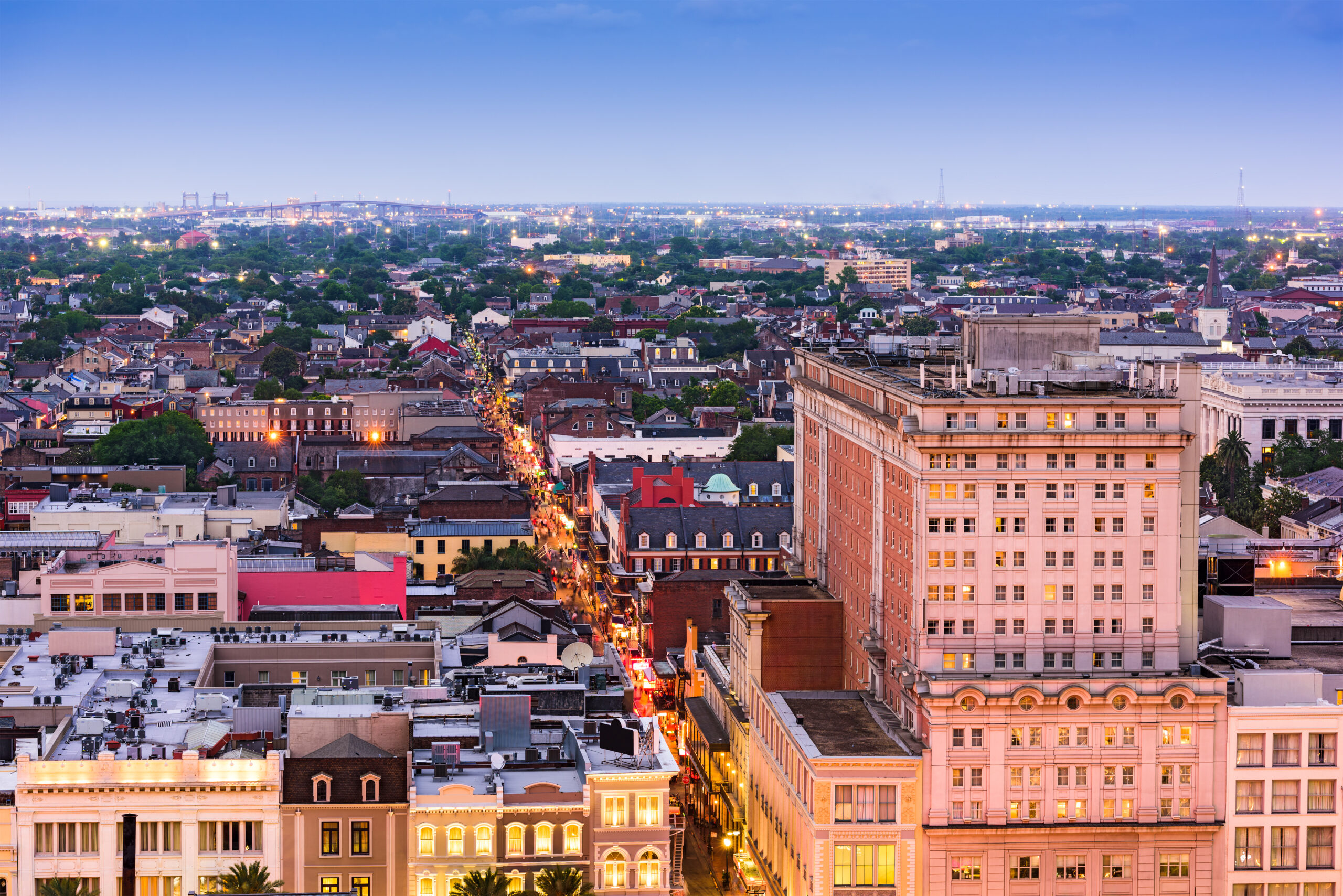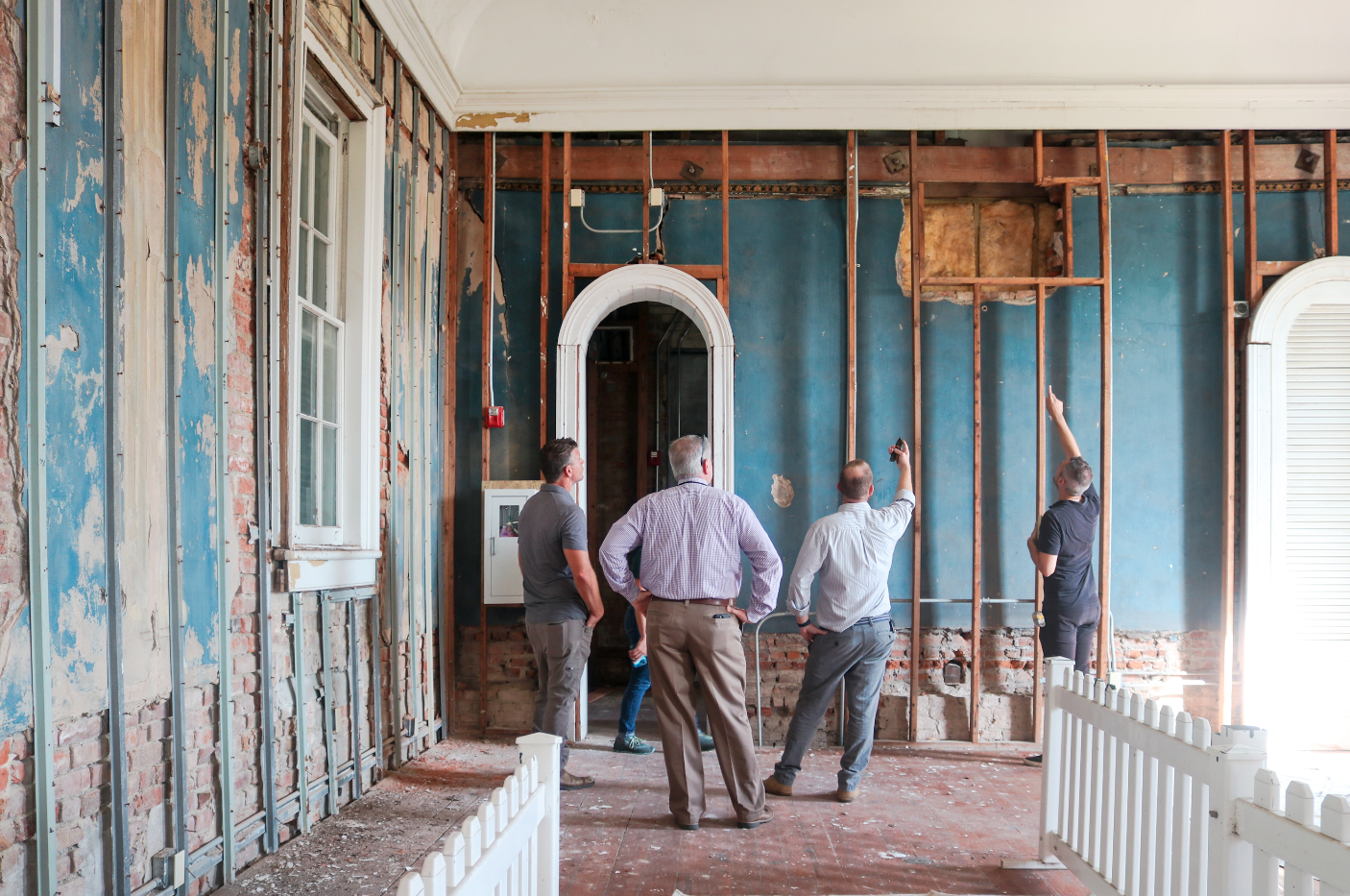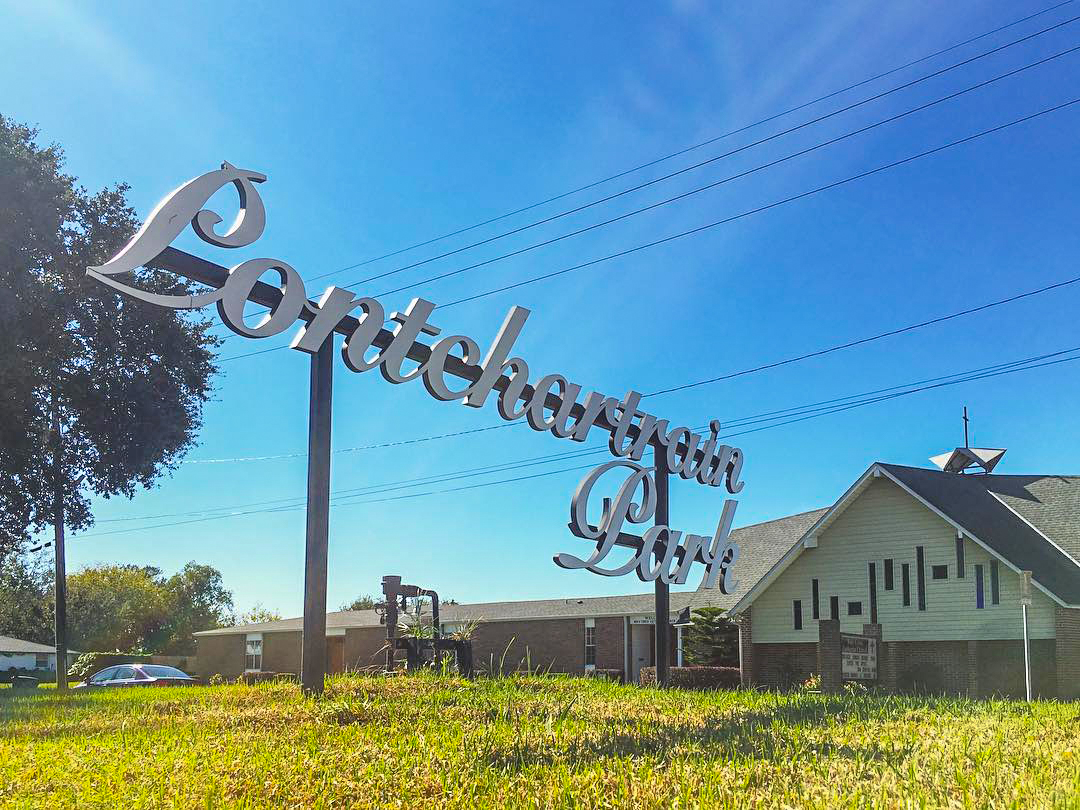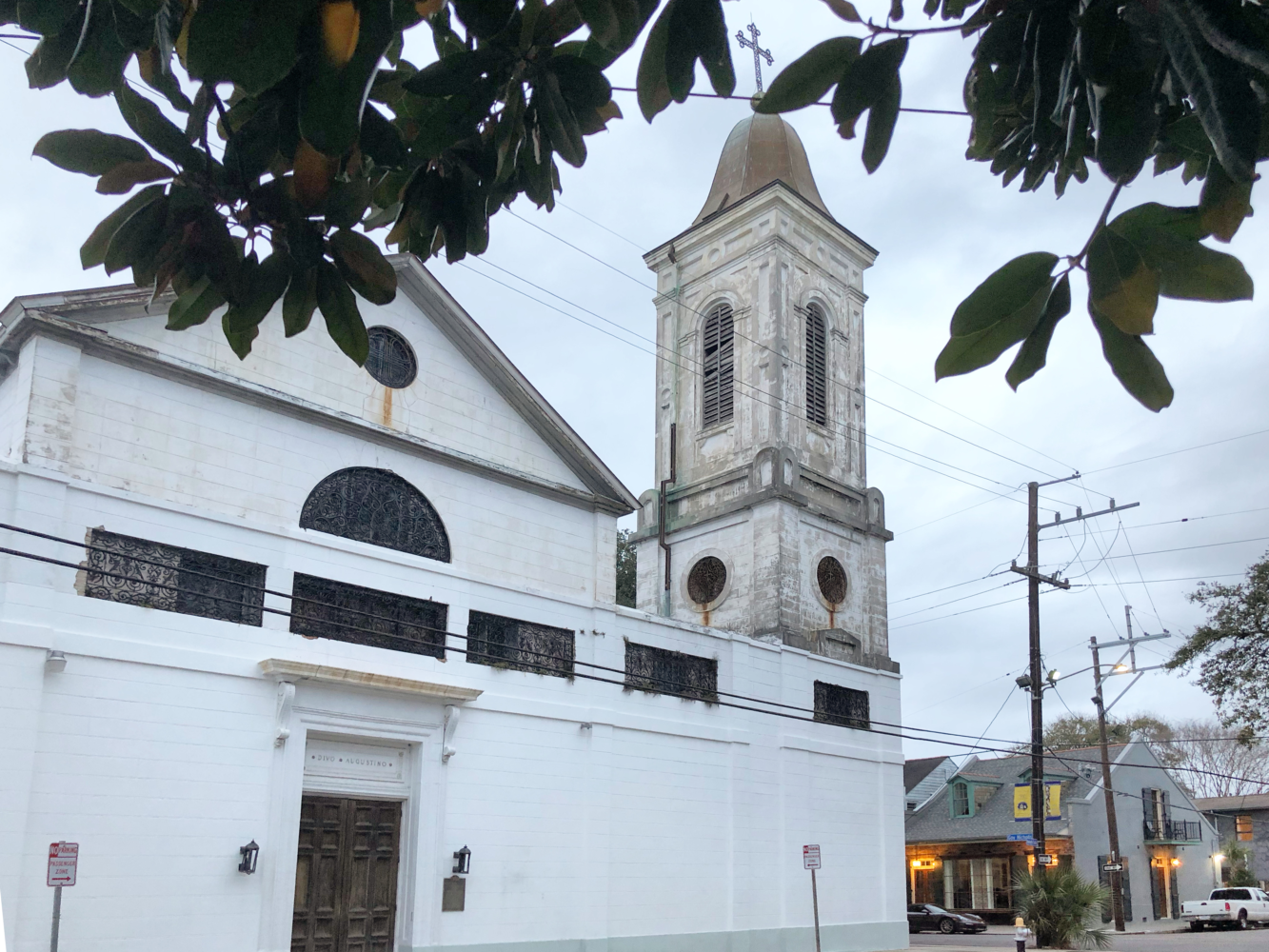This story appeared in the October/November issue of PRC’s Preservation in Print magazine. Interested in getting more preservation stories like this delivered to your door? Become a member of the PRC for a subscription!
Nowadays, hardly a week goes by without my encountering some variety of the “New Orleans is Doomed” sentiment. Earnest op-eds vie with outraged Nextdoor posts to lament our region’s accelerating collapse.
The only problem with this damning assessment is this: The preponderance of evidence indicates otherwise. Do residents realize that total regional employment has recovered — and surpassed — its pre-pandemic peak? That the number of workers in the local tech sector has surged since 2010? That educational outcomes among the city’s public school students are vastly better than before Hurricane Katrina?
I urge everyone to mix in some hard data with their gut feelings. Let’s look at how far we’ve come.
Consider New Orleans Public Schools. In 2004, six out of 10 Orleans Parish public schools were deemed “failing” by the state. Nowadays, that’s true for only one out of six — and this transformation happened in the context of rising standards. It’s become harder to score higher, and yet the city’s public schools are scoring much higher.
High school graduation rates have soared, rising from the Class of 2004’s 54 percent to the Class of 2021’s 78 percent. Last year, 56 percent of New Orleans Public Schools’ high school graduates enrolled as freshmen in two- or four-year colleges, a far greater percentage than the 2004 figure of 37 percent. A robust ecosystem of career training also has emerged, with the NOPS-affiliated New Orleans Career Center and non-profits like YouthForceNOLA partnering to ensure high school graduates possess career readiness and in-demand certifications for living wage jobs.
A comprehensive program of free and subsidized early childhood education for thousands of preschoolers debuted this school year. The new program’s annual budget exceeds $20 million. Our most disadvantaged students will now start kindergarten better prepared than ever before, which will pay dividends in coming years.
Finally, completion of the $2 billion School Facilities Master Plan means that NOPS students enjoy, for the first time, uniformly top-notch facilities.
“Hang on,” you interject. “Public schooling was hardly the only thing going wrong, pre-Katrina.”
True; that’s why it’s essential to recognize additional transformative developments of the past 15 years. These include:
- The $14 billion storm surge protection perimeter around our region, which proved its strength during Category 4 Hurricane Ida;
- The city’s first master plan, given the force of law, and complemented with a revised, progressive zoning code which mandates best practices in stormwater management and which permits — by right — the mix of uses historically characterizing the city’s older neighborhoods;
- The New Orleans Public Library system has been completely rebuilt, as has the New Orleans Recreation Department. Both possess greatly improved facilities and far larger budgets than those of 2005;
- In 2019, our region acquired, in effect, a new international airport with the completion of MSY’s $1.3 billion North Terminal;
- The Regional Transit Authority (RTA) last year unveiled the first wholesale network redesign in its history, one that established a route system adapted to the employment and usage patterns of today, instead of those prevailing in 1950;
- An ongoing, $2.3 billion program aims to fix New Orleans’ roads, an effort 20-times bigger than anything the city has attempted before;
- And recently, construction commenced on the $3 billion Mid-Barataria Sediment Diversion, which will harness the sediment load of the Mississippi River to rebuild the protective cordon of wetlands south of the city.
“Yeah, but…” you splutter, growing annoyed. “That’s all true enough, but we’ll never get anywhere unless we attract more private investment, more than just new hotels or restaurants.”
We forget that private firms have responded vigorously in the past 15 years to all of this public sector renewal and reform. Investment has poured into historic commercial corridors like Freret Street, Bayou Road, St. Claude Avenue, Oak Street and Oretha Castle Haley Boulevard, corridors that were languishing pre-Katrina. Longstanding corporate anchors like Pan American Life Insurance, IMTT and Jones Walker have recommitted to downtown. An entirely new neighborhood, the $1 billion South Market District, has taken the place of what were, for decades, barren surface parking lots along Loyola Avenue, and the River District, another new, multi-billion-dollar neighborhood slated to welcome Shell’s local offices as its anchor tenant, is under development adjacent to the Lower Garden District. Savvy marketing of New Orleans as a “low cost/high culture” locus for the tech sector combined with effective state incentives has grown tech employment by 60 percent since 2010; more than 11,000 workers are now employed in digital media in Greater New Orleans.
Health care and the biosciences also have thrived. Ochsner Health now operates 46 hospitals (versus six in 2005) and employs more than 40,000 individuals, and this summer, it announced a groundbreaking partnership with MD Anderson Cancer Center to develop a national center for cutting-edge oncology. The region’s entrepreneurial surge extends into the health sciences and biotechnology as well, with the New Orleans BioInnovation Center’s biosciences incubator on Canal Street notching wins like Obatala Sciences and AxoSim.
Higher education also dominates. Thirteen two- and four-year institutions of higher learning enroll more than 70,000 students, and one of the city’s largest single employers is Tulane University. We are one of the few American cities with two medical schools, and Xavier University is partnering with Ochsner to start a third.
Advanced manufacturing is likewise flourishing here. Commencing with the Apollo Program, every manned space mission NASA has launched included rocket components built at the Michoud Assembly Facility in New Orleans East, which now employs close to 5,000 workers and whose tenants include Lockheed Martin, Boeing and GE Renewable Energy.
Finally, there’s the maritime sector. The Port of South Louisiana is the largest in the Western Hemisphere by tonnage handled, and the Port of New Orleans — already among the busiest break-bulk cargo centers in the nation with its key products of coffee, steel and rubber but less competitive in containerized shipping – is developing a $1.5 billion container port in St. Bernard Parish.
So why is everyone so bummed?
I believe the answer is three-fold. First: The mid-1980s Oil Bust and then Hurricane Katrina, separated by a mere 20 years, administered ruthless body blows to Greater New Orleans. The majority of the past 40 years has felt like time spent just recovering lost ground. Second: A metastasizing resurgence of crime coincided with the pandemic and the ever-more-alarming consequences of climate change (e.g., the insurance market meltdown), making residents once again doubt the city’s viability. Third: Our region is instinctively, reflexively dedicated to downplaying good news and marinating in bad news. We too easily slip into a deeply counter-productive headspace of chronic, low-level demoralization, even though it poorly corresponds to reality.
Even before Katrina chased several hundred thousand inhabitants permanently from our region, Greater New Orleans’ population trends were deeply impacted by the now almost-forgotten Oil Bust, which gripped the region starting in 1986. Before the Oil Bust, Greater New Orleans had registered more than two decades of brisk population growth.
In the 1980 Census, the 10-parish region boasted 1.43 million inhabitants (versus just over 1 million inhabitants counted in the 1960 Census). By the 2020 Census, the same 10 parishes contained just 1.45 million residents. But these sobering population figures — basically no net growth over 40 years — must be understood in the context of the recovery from twin calamities: the Oil Bust and then Hurricane Katrina. Population statistics that tabulate the net addition since 1980 of “only” 20,000 residents should actually prompt us to celebrate that we have recovered, against all odds. Properly appreciating the full gravity of the twin calamities, our collective success in surviving them, and our leveraging of (especially) Hurricane Katrina to rebuild stronger should evoke not hopelessness but instead valuable perspective and a measure of justifiable optimism.
We should also better calibrate our expectations. Greater New Orleans is now the 47th largest metro area by population in the nation. Our peer regions are places like metro Buffalo, metro Louisville, metro Milwaukee, metro Memphis and metro Birmingham. Are we doing as well as these places? Better, I would say, especially upon our honest recognition of the accomplishments and advantages we retain. By contrast, comparing Greater New Orleans’ job market to those of cities like Atlanta, Dallas or Houston — regions now six to seven times as populous (or even to regions now twice as populous, like Austin, Nashville or Charlotte) — is like critiquing Houma for not possessing the live theater scene of Manhattan. We need to cease making unrealistic comparisons.
Finally, we need to stop telling ourselves that our only industry is tourism. I hear this about as often as I hear predictions of the city’s imminent demise. But it’s not true. Roughly one in seven jobs in Greater New Orleans is in tourism or hospitality, which hardly makes tourism the only game in town. It’s a leading economic sector here, not the leading economic sector.
I write at such great length not only as a NOLA-Till-Ya-Die type but also as someone who has been splitting time between here and Knoxville, Tenn., since mid-2020.
Tennessee is, along with Florida and Texas, one of the most popular states for in-migration in the nation these days. So, how does it stack up? It’s…OK. Roads are smoother, there’s less litter, and the climate is milder, but Tennessee’s rate of violent crime is slightly higher, per capita, than Louisiana’s, and poverty is widespread. Knoxville is poorer than New Orleans, and an appreciably lower percentage of the population has earned a bachelor’s degree or higher. Public schools are mediocre (last year, 59 percent of Knox County students did not meet the state’s expectations in the reading portion of the high-stakes exam administered to third graders), and racial diversity is largely absent.
Knoxville’s major streets consist mostly of anonymous, endless assemblages of strip malls, surface parking lots and power lines. It’s hard to see why metro Knoxville is nonetheless steadily growing as its metrics are not fundamentally more compelling than those for Greater New Orleans.
Additionally, Knoxville’s unfortunate aesthetic characteristics are largely shared by every other American city I’ve visited. None possess anything like New Orleans’ enormous and beautiful historic built environment, our walkability, our authentic folk culture and sophisticated amenities, even though many of them are far more populous now. Warts and all, New Orleans is one of the world’s great cities. Most other places in this country just aren’t.
There’s so much more work to be done to complete the visionary, post-Katrina project of building the best New Orleans ever. When crime strikes, it can be life altering. Too many still live in poverty in this city. And political grousing at City Hall can be exhausting. But take heart. So much has been accomplished in the recent past, by all of us. With all of our participation, so much more is possible.








